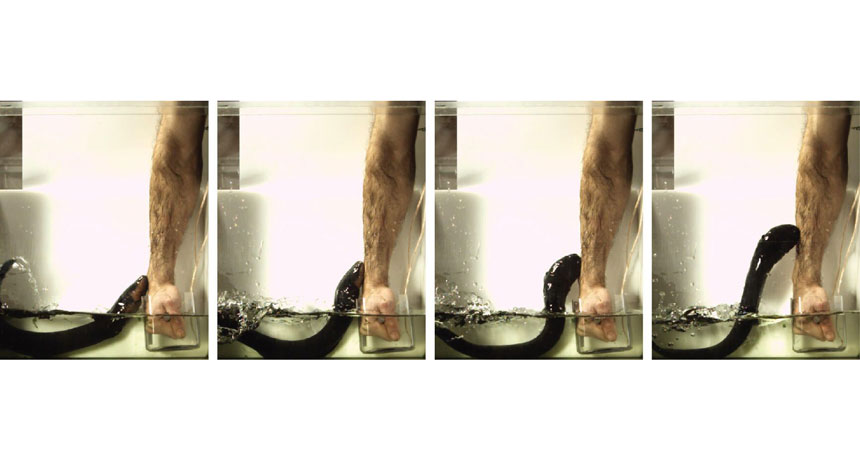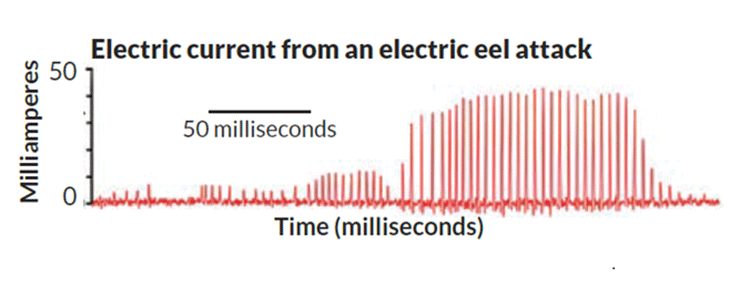ampere A rate of electrical current equal to one coulomb per second. A milliampere is a thousandth of an ampere.
aquatic An adjective that refers to water.
axis (in mathematics) An axis is a line to the side or bottom of a graph; it is labeled to explain the graph’s meaning and the units of measurement.
biology The study of living things. The scientists who study them are known as biologists.
current A fluid — such as of water or air — that moves in a recognizable direction. (in electricity) The flow of electricity or the amount of electricity moving through some point over a particular period of time.
defense (in biology) A natural protective action taken or chemical response that occurs when a species confront predators or agents that might harm it. (adj. defensive)
eel A fish with a snake-like body and no scales. Many migrate from freshwater to salt water when it’s time to spawn.
electric current A flow of electric charge — electricity — usually from the movement of negatively charged particles, called electrons.
electricity A flow of charge, usually from the movement of negatively charged particles, called electrons.
mechanism The steps or process by which something happens or “works.” It may be the spring that pops something from one hole into another. It could be the squeezing of the heart muscle that pumps blood throughout the body. It could be the friction (with the road and air) that slows down the speed of a coasting car. Researchers often look for the mechanism behind actions and reactions to understand how something functions.
millisecond A thousandth of a second.
predator (adjective: predatory) A creature that preys on other animals for most or all of its food.
prey (n.) Animal species eaten by others. (v.) To attack and eat another species.
TASER A brand-name of version of a “conducted electrical weapon” used by police, the military, prisons, security guards and others. It sends out electrodes that deliver a stunning discharge of electricity into a person to incapacitate them. Such devices are popularly referred to as stun guns.
watt A measure of the rate of energy use, flux (or flow) or production. It is equivalent to one joule per second. It describes the rate of energy converted from one form to another — or moved — per unit of time. For instance, a kilowatt is 1,000 watts, and household energy use is typically measured and quantified in terms of kilowatt-hours, or the number of kilowatts used per hour.









